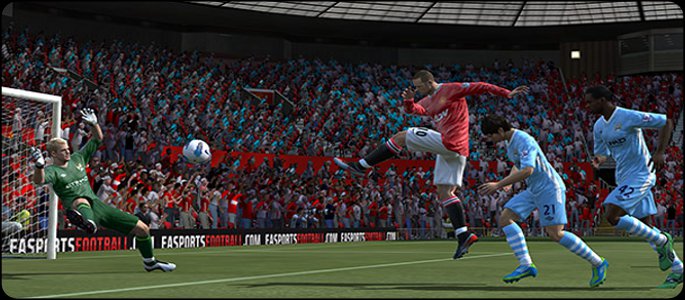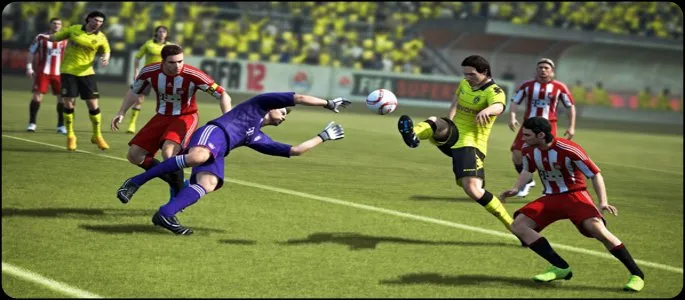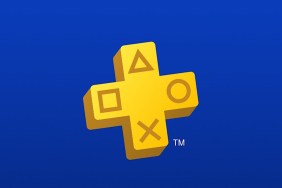FIFA 12 on the consoles has become the top-selling sports game of all time, so EA Sports had big spikes to fill in bringing it to a handheld. Filling those shoes comes with added difficulty when considering that this handheld version of the game is a year old, running off the engine and build of FIFA 11. Even so, this is a great experience for those ready for a bit of footy on the go.
It is hard to look at this game running on the Vita and not be completely impressed with its visual flair. All of the console’s quality aesthetics carry over, perfectly preserving the EA Sports feel that we’ve come to love. The amount of detail both on and off the pitch is to the level you’d expect from a retail release. The game imports the easy-to-learn button layout from the consoles, making this an easy transition for those who have picked up a copy on a big boy console.
However, with all that said about a smooth transition, for those who were starting to get used to the nuances of the new FIFA 12 engine, this will feel like a bit of a step back. Players will not be able to stop their dribble on a dime with precision dribbling, as this is not found in the Vita version. This all might bug some of you out there looking for something with the latest and greatest, but this is a small sacrifice for a port this smooth. In fact, if any of you out there didn’t like the changes that EA Sports made with 12, you might find a lot of satisfaction in this game.
As far as the modes go, a few staples make an appearance in the game, such as Be A Pro, Practice Arena, and the Manager Mode. Career Mode is also there but takes a few steps back as it lacks the scouting department feature, making it hard to bolster your youth squads. More noticeable absences include Ultimate Team and EA Sports Football Club. Online play is rather meager, with only a basic two-player, head-to-head match available. This works fine, but as the only multiplayer option, might leave some wanting more. It’s somewhat expected for the game to skimp some features from the main games, so keep some of your expectations to a minimum.

As expected with a Vita release, there are some features and controls specific to the handheld. Having touchscreen controls is a good idea in theory, but in practice, they feel very hit or miss…mostly leaning towards the miss part. Players will be able to pass the ball, throw it in, or take free kicks all by a tapping the point on the screen where you want the ball to go. This is a really cool idea for throw-ins or free kicks when everyone is standing still, but trying to pull off this high risk maneuver in the middle of a game is suicide and doesn’t feel very natural mid-run to try to touch the screen.
The rear touch pad provides players with a different way to shoot the ball on goal, but like the front touch controls, it only works the way you want it to about half of the time. In some situations during Be A Pro or the Practice Arena, this is easy and fun to use, as you simply touch the back pad on the place you want to shoot, and your player will do so. Problem here is that the back touch controls are far too sensitive and you will find yourself accidentally shooting from midfield as you tried to comfortably relax your fingers on the back on the Vita. Thankfully, these features can be turned off from the options menu inside the game, so you don’t have to worry about it you don’t want to.
All in all, FIFA Soccer is a solid example of what sports games can do on the Vita. It would have been nice to see the team at EA Sports put a bit more time into refining the engine and bringing over a larger bulk of the game modes. It would have also been nice to see the touch screen controls used a bit better, and the back touch pad’s sensitivity turned down. Nonetheless, with the crisp controls and great visuals, this is a great buy for someone looking for a bit of kick ball on their train ride to work.
PlayStation LifeStyle’s Final Score
-A few modes have gone missing on the trip -Motion controls add very little and often get in the way |
 |
–








